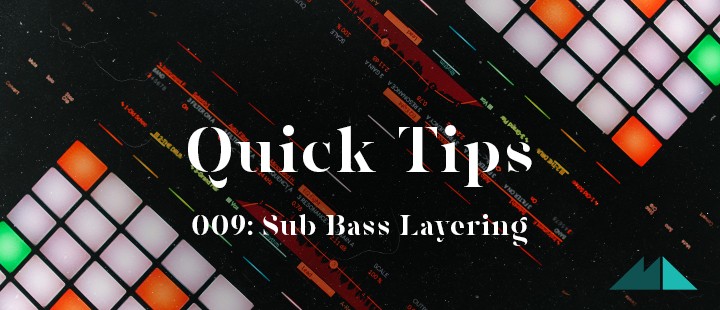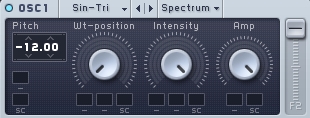
Producing a full, deep, well-rounded bass sound is trickier than you'd think and, with heavy bass becoming something of a global obsession, an important music production skill to master. Luckily however, there's an ingeniously simple yet incredibly effective technique for creating thick, full bass in your electronic music that works every time you care to put it to the test - it involves some straight-forward layering, sub bass and not much else. Sound easy' Let's get to it!
Music Production Layering: Overview
To begin, let's quickly cover a few points relating to synth layering that will better explain the following step-by-step production guide. Firstly, whenever you layer synths, bass, drums, percussion, sponge cakes and trifles (well, maybe not those last two), you need to pay special attention to the common frequency areas between your layers.
Without proper control, your resulting layered sound can begin to sound 'lumpy' and 'flabby' very quickly - meaning there are particular frequency areas that are too loud and prominent in the mix, due to 2 or more layers contributing to the sound in that frequency band.
What's the solution' EQ and filtering of course! We can focus exclusively on the latter in the context of thickening our bass below but EQ is an equally important tool to use in helping to tame those lumpy areas in your layered sound. Graphic EQ units, combined with spectrum analysers, can be very effective here, as they allow you to see, hear and control how the energy is distributed on each track layer. Check out our in-depth article on synth layering for more info.

50 Shades of Bass
When it comes to synth layering, you can get as carried away as you like. Try a delicate, crackling synth lead with a thick, pulsing, gated synth; mix a subtle, floating pad synth with a noisy, scratchy synth texture; throw a glassy, FM synth riff over a razor-sharp sawtooth waveform; the possibilities are simply endless.
I like to treat bass layering a little more like drum layering, in that I think fewer layers chosen to cover very specific frequency areas produce the best results. The most common problem with bass is that it lacks weight, heft and depth, so this is what I'm going to focus on. However, the same technique can be used to add subtle mid-range spice or upper harmonics to a bass sound - the key is to listen carefully to your bass in the mix and ask yourself what the sound is lacking.
The Process - Adding Weight To A Weak Bass Sound
1. Create a new DAW track alongside your original bass sound. If it is triggered using MIDI, then copy this MIDI over to your new track.
2. Load up a soft synth on the 2nd track that will allow you to produce a pure sinewave, such as NI Massive (check out our list of the best free soft synths for more options). Choose just one oscillator if there are multiple options and set its waveform to sine.

3. Either use your existing MIDI or play/draw in your bassline so that the sinewave track follows the same melody and rhythm of the original bass part. If your bassline is already very low, leave the sinewave bass as it is or, if you can detune the oscillator by an octave and still very audibly hear the bass, do so.
4. Go back to your original bass and place a high pass filter plugin (or use the low cut setting in a parametric EQ) over it, setting the resonance to 0 or none and placing the filter cutoff at around 75Hz. Listen carefully to the two bass parts and use spectrum analysers to make sure the original bass sound is not straying too much into that low to sub bass region below 50Hz - adjust the filter cutoff in accordance with this.

5. Mix the two sounds to taste - you might need to pull the sub bass back a little in volume to allow the original bass sound room to come through properly in the mix.
6. As a final step, you can bus the two bass tracks out to a single bus track and place a compressor plugin over it to help further gel the two sounds together. Start with light compression, aiming for 3 - 6dB of gain reduction and compress the sounds more if you feel they need extra merging.
That's it! As you can see from the above, producing a weightier bass sound is as easy as 1, 2, 3 (4, 5 and 6...), so get layering up those sub bass frequencies to create a fuller low-end in your music. Don't forget to check out the rest of our Quick Tips series for more bite-sized production advice!





